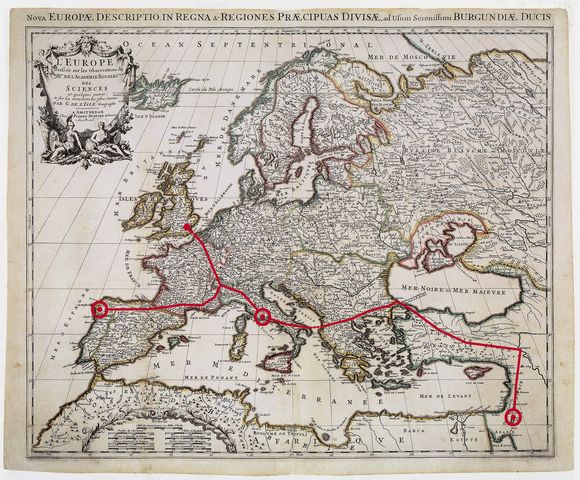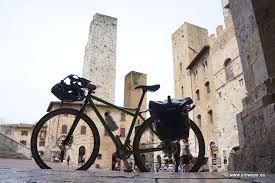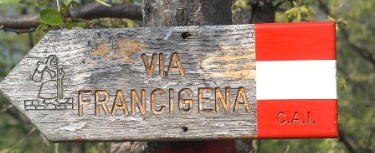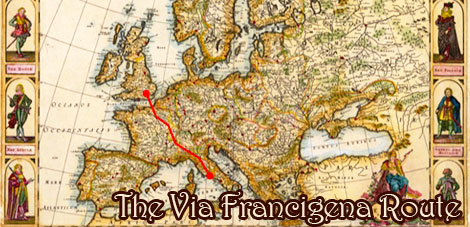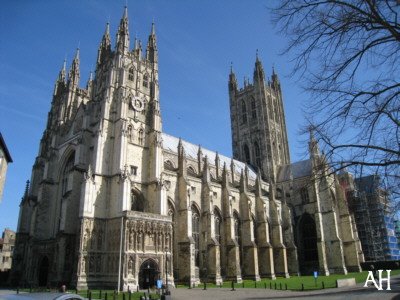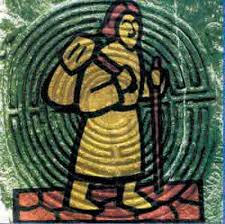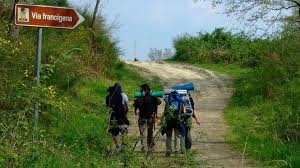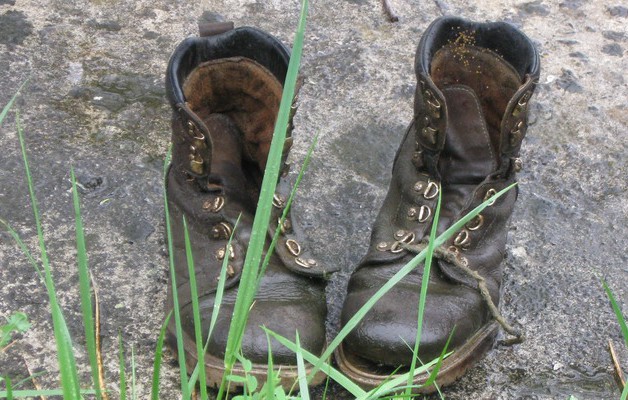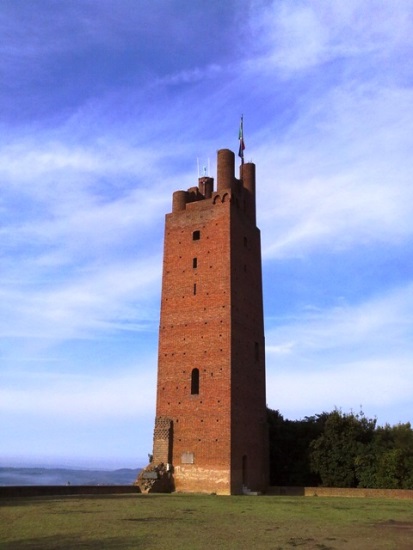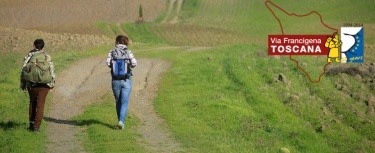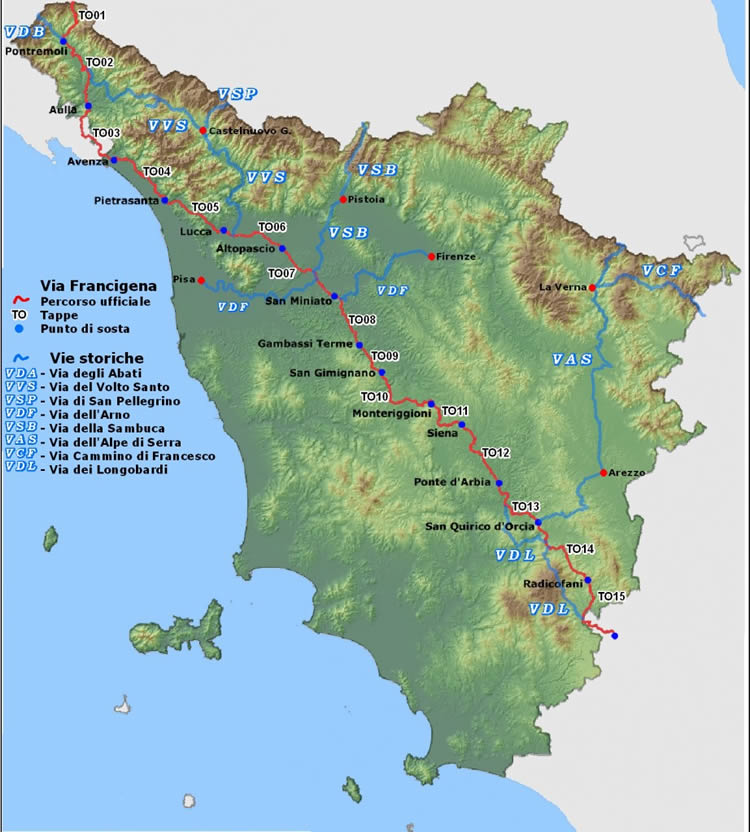THE VIA FRANCIGENA
Towards the end of the 2nd century A.D. pilgrimage gained increasing importance. The holy places of Christianity were Jerusalem, Rome and Santiago de Compostela.
The Via Francigena was the central hub of these pilgrimage routes.
Many pilgrims walking along this road from the north to Rome ,continued along the via Appia and reached the ports of Puglia, where they embarked for the Holy Land. Italian pilgrims going to Santiago walked to the north and then embarked for the French ports, or walked along Via Tolosana and reached Spain.
The Via Francigena has been the pilgrimage route to Rome since the Middle Ages. It was used not only by simple pilgrims, but also by Kings, Popes and Princes.
Inns, hospitals,monasteries,boroughs and castles were built along its path , therefore it became an important trade and cultural route .
A SHORT HISTORY OF THE VIA FRANCIGENA
The Via Francigena was a connecting route which contributed to the cultural unity of Europe in the Middle Ages.
We can trace the ancient route of the Via Francigena by using travel diaries, and in particular, the records of a famous pilgrim, Sigeric the Serious.
In 990, after being ordained Archbishop of Canterbury by Pope John XV, the abbot returned home and noted the 80 “mansions” where he had stayed on two handwritten pages.
The pilgrimage of Sigeric the Serious, Archbishop of Canterbury, marked the beginning of the Via Francigena.
In the seventh century the Lombards fought against the Byzantines to get more Italian territories. The strategic need to connect the Kingdom of Pavia with the southern duchies led to the choice of a road ,which crossed the Apennines by the Cisa Pass, followed the Magra Valley and then turned away from the coast towards Lucca.
The path continued through the Elsa Valley towards Siena, and then through the valleys d’Orcia and Arbia towards Val di Paglia and Lazio . The route, which was known as “Via di Monte Bardone”, became less used after the fall of the Empire.
In the following centuries the Roman paving stones gradually disappeared to be replaced by a network of paths and tracks trodden by travellers.
When the Lombards’ rule gave way to the Franks’ rule, the route changed its name into Via Francigena, or “road from France”; this included the Rhine Valley and the Netherlands. It became the main connecting route between northern and southern Europe and it was used by merchants, armies and pilgrims. 
During the Middle Ages, the Via Francigena was an important pilgrimage route, not a single road, although it included several possible routes that changed over the centuries. “All roads leads to Rome, you know!”
The Via Francigena, unlike ancient Roman roads, connected abbeys, linking the sacred places of the Christian world. This road soon became an important route for men and goods, thus contributing to the great rebirth of European commerce. The increasing use of the Via Francigena as a trade route led to the development of many towns along the road. The route became the main route to take goods from the east (silk, spices…) to the markets of northern Europe and trade them for cloth from Flanders and Brabant to the Champagne fairs.
In the 13th century the growing importance of Florence and the Arno Valley area marked the end of this ancient route. Nowadays the official route is divided into 79 stages and begins in Canterbury, continues in France, Switzerland and Italy and ends in Rome. It is 2,000 km long and crosses seven Italian regions – Valle d’Aosta, Piedmont, Lombardy, Emilia Romagna, Liguria, Tuscany and Lazio – and 140 municipalities, with a total of 44 stages in Italy.
Today the Via Francigena is also a journey through the Italian landscape, which changes greatly: from the pastures of the Aosta Valley to the industrial and agricultural plains of Piedmont, from the Po River to the rolling hills of Emilia, from the harshness of northern Tuscany to the sweetness of the Crete Senesi and the enchantment of the volcanic lakes of Lazio. This journey makes modern pilgrims really understand the landscape , the past and the present. The journey turns into a gradual immersion in the roots of our culture, in which changes in the landscape, small and great works of art, the people we meet along the road, make us understand the essence of our heritage.
San Miniato is the part of project “San Miniato in the heart of Tuscany Via Francigena”. Low cost “pilgrim” accommodation (religious facilities, hostels, guesthouses…) and “tourist” accommodation (hotels, B&Bs, accommodation in farms,…) are available along the Via Francigena. A Festival called Francigena Melody Road is held on the Via Francigena in San Miniato in summer.
SAN MINIATO – GAMBASSI TERME
This part is 23.7 km long and begins in San Miniato and takes less than 6 hours’ walk. After an hour’s walk, you take a path leading to the hills of Val d’Elsa. Here you can see castles, forts, hospitals and abbeys, which are located on the Via Francigena.
You can see the famous “Pieve of Coiano” and “Pieve in Chianni”, which is now a hostel, road-houses and a water supply in Calenzano .You can also reach Montaione and San Vivaldo.
San Miniato -From the top of the fortress visitors can see the point where the Via Francigena meets the Roman road that runs from Pisa to Florence.
You can also visit the San Genesio archaeological site, indicated by numerous medieval travellers as a famous stop on the via Francigena.
SAN GENESIO : an Archaeological Site
The history of this site goes back to even further than the Middle Ages. Excavations have brought to light evidence of activity in the area spanning from Etruscan times to the Roman and late Ancient periods, when a large necropolis was formed. The remains of a village were found in the Lombard period.
The settlement consisted of wooden buildings and a small stone church.
Probably, the town was linked with the city of Lucca, which used it as a strategic check point to monitor the road and river traffic in the Arno river valley. A new church called the Pieve of San Genesio was built at the end of the 7th century.
Castelfiorentino – From the end of the 1400s, a pilgrim walking along the Via Francigena could see two tabernacles, frescoed by the Florentine painter ,Benozzo Gozzoli, near Castelfiorentino. We can find the”Tabernacle of Madonna della Tosse” near the “Church of the Saints Pietro and Paolo” in Coiano, the 21st stop of Sigeric’s itinerary .
Benozzo Gozzoli frescoed “The Death and Annunciation of the Madonna”inside.
There is another tabernacle, called the “Tabernacle della Visitazione” in front of the ancient “Monastero delle Clarisse” in Castelfiorentino.
It depicts the” Life of the Madonna” by Benozzo Gozzoli. Today the two tabernacles are in the “Benozzo Gozzoli ‘s Museum” in Castelfiorentino.
Montaione – Montaione is a small medieval village perched on top of a hill dominating the Elsa Valley. The centre is built around a tower and is surrounded by ancient walls. In Montaione you can visit the Civic Museum, where the oldest relics is a sixth-century B.C. Etruscan “stele” statue depicting a warrior with a helmet, a spear and a shield on a tombstone .You can also visit the “Franciscan Convent of the Sacred Mount”in San Vivaldo, called Jerusalem since it reproduces the places of the Holy City in reduced scale.
ALTOPASCIO – SAN MINIATO
This leg is 25.3 km long and begins in Altopascio; it takes less than 6 hours’ walk. On the first section of the path, in Galleno, trekkers can walk on the ancient part of the Via Francigena.
After crossing the hills of Cerbaie, you head for Ponte a Cappiano, famous for its Medici bridge.
From here you can cross the ancient swamp that has been drained and go up to Fucecchio walking along the banks of the Usciana Canal. After crossing the Arno, you arrive in San Miniato .
SIGHTS
Altopascio – It was a major hospice centre in Europe in the Middle Ages. The history of Altopascio starts with the “Hospice of Tau” in the early 11th century. It has provided hospitality and assistance to the pilgrims ,the sick and the poor walking on the Via Francigena for centuries.
In the 12th century Altopascio was called “The Hospice” or Hospital all over Europe. It was mentioned in the works by Boccaccio,Machiavelli and Shakespeare.
Fucecchio-It is famous for its” San Salvatore’s Abbey”. The Abbey was founded by the Cadolingi Counts.
Castelfranco di Sotto and Orentano – They are located in the Cerbaie hills. In 1418 the border between the cities of Castelfranco and Fucecchio was located along the moat of the Galleno castle and the late medieval road which was a reconstruction of an ancient part of the Via Francigena.
